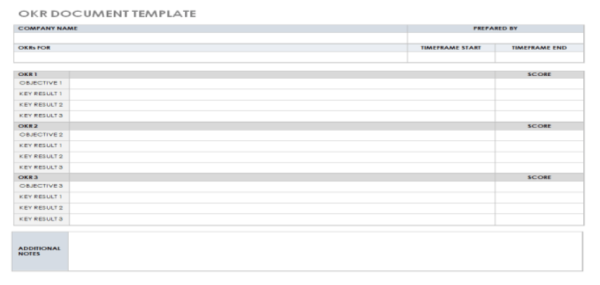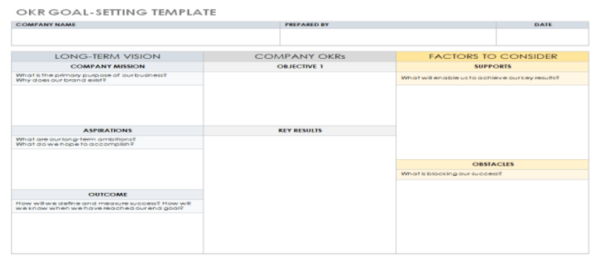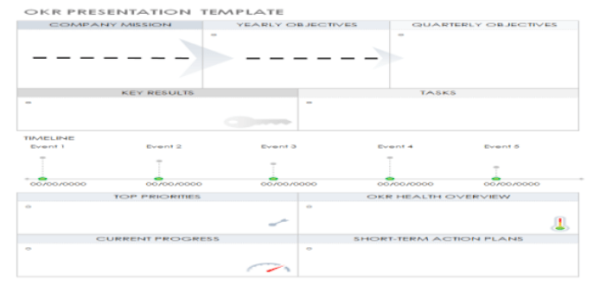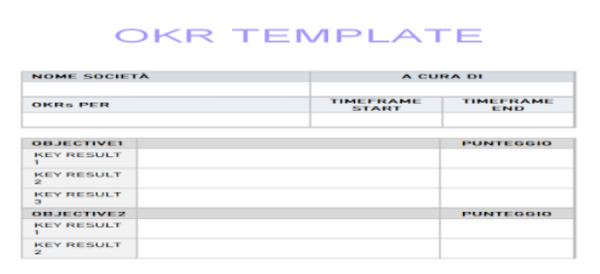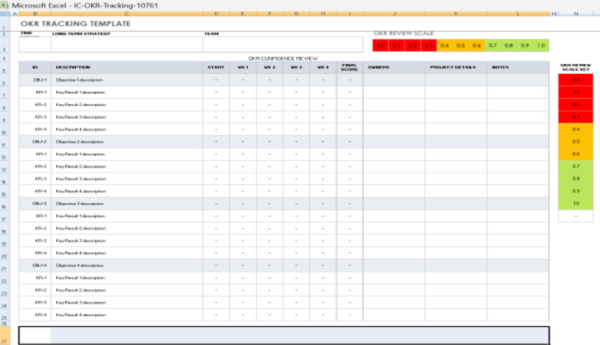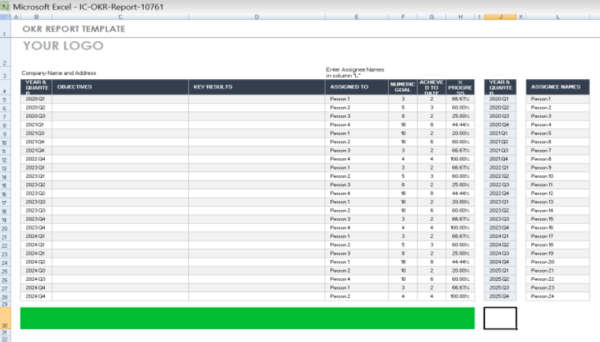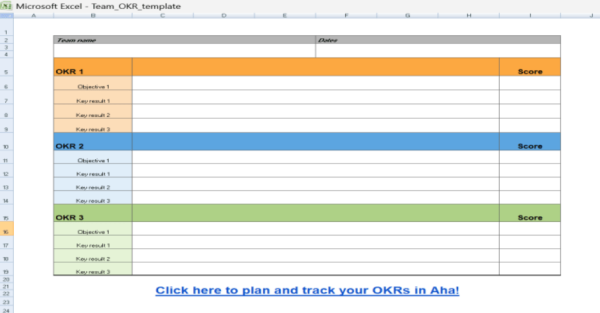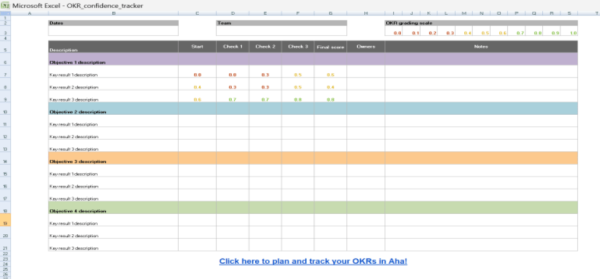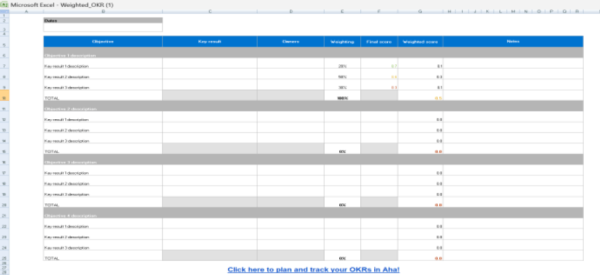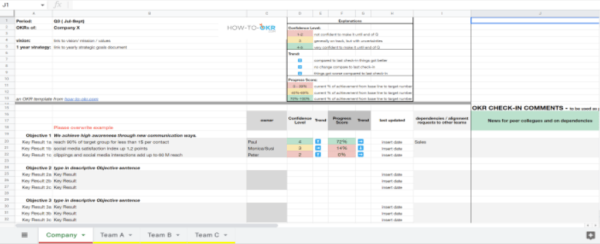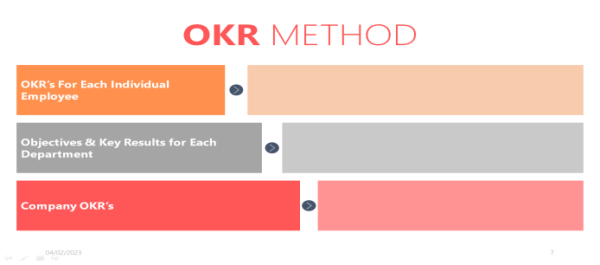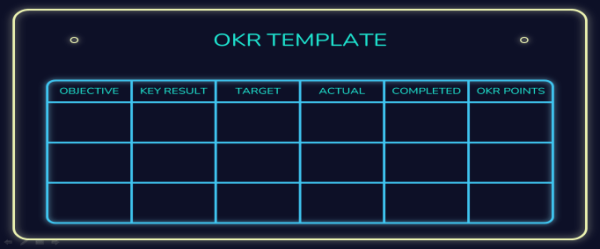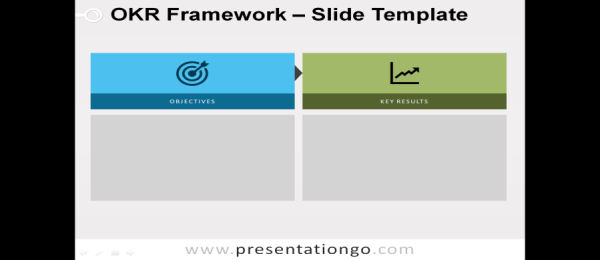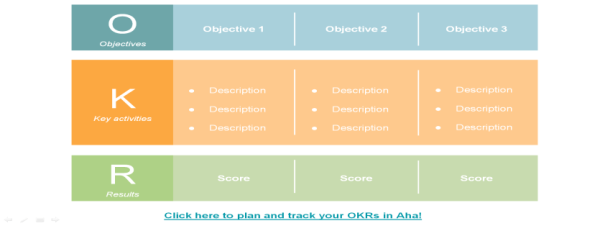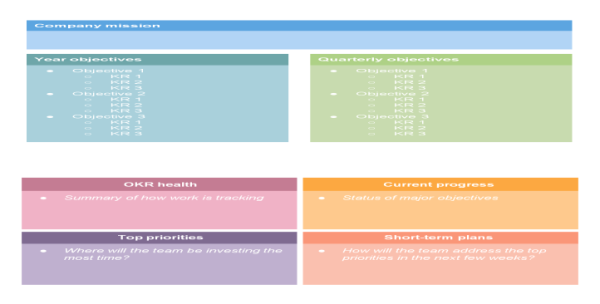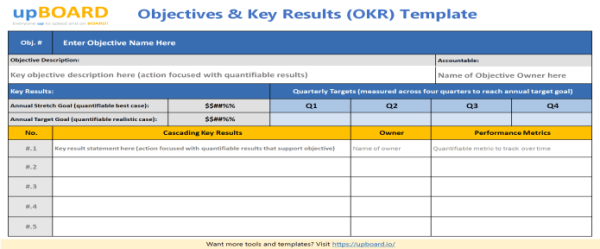An OKR, or Objectives and Key Results, is a framework for setting measurable goals and tracking progress. It is commonly used in project management and can be adapted to various businesses and organizations. This framework’s goals are meant to be quantitative, hierarchical, and aligned with the company, team, and individual objectives. Also, it can be helpful in keeping projects on track and ensuring that everyone is working towards the same objectives and achieving scalable goals.
An OKR, or Objectives and Key Results, is a tool used in project management to help teams focus on specific goals and measure progress. An OKR typically includes a set of objectives, or goals, that a team wants to achieve, as well as a set of key results, or metrics, that will be used to measure progress.
An OKR tool can be a framework that you can use by organizations to set, track, and measure progress and objectives. When creating one, make sure it is specific, measurable, achievable, relevant, and time-bound. And is constructed with words that are action-oriented and meaningful.
Types of OKR
The type of OKR you use will depend on your company’s needs and goals. There are two types to consider when creating your OKRs
The aspirational OKR
An aspirational OKR is a specific type of OKR that is designed to stretch a company beyond its current capabilities. This goal is often used to help companies set bold, ambitious goals that will challenge them to think outside the box and push themselves to new levels of success.
Setting an Aspirational OKR may be a terrific method to inspire workers and aid in a company’s growth. But it’s crucial to have reasonable expectations and make sure your objectives are doable. Otherwise, workers can lose motivation and the business might not get the outcomes it wants.
Committed OKR
A committed OKR is a measurable goal that everyone commits to achieve. Also, it should be strictly aligned with the company’s overall strategy.
Basically, this is a system where individuals or groups set specific goals that they want to achieve within a certain timeframe. The term “committed” refers to the fact that these goals are not simply aspirational, but are instead meant to be achieved.
OKR vs KPI
Easily explained, OKRs are the strategic framework, while KPIs are metrics inside the framework.
The OKR framework is a popular performance management system that helps businesses set and track progress towards specific objectives.
KPI, on the other hand, stands for Key Performance Indicator. KPIs are specific metrics that are used to measure progress and success. Unlike OKRs, which are more focused on overall objectives, KPIs are more granular and specific.
OKR and KPI example
Let’s say you are a sales manager and your goal is to increase sales by 20% this quarter. This would be an OKR.
To measure this, you would set KPIs such as the x% number of sales made, x number of calls made, etc. You would then track these KPIs to see if you are on track to reach your goal.
Generally, it is normal to establish between 3-5 OKRs max per team during a whole quarter. However, having 1-2 OKRs can be enough. The type of OKR you use will depend on your project needs and goals
How to write OKR?
Imagine you’re the project leader for a Digital Marketing agency that aims to meet its revenue and more this year. Your team is in charge of optimizing a client’s website funnel in order to generate 10.000 more visitors by the end of the year.
Understand the components of an OKR
Objective: what your team wants to achieve
Key Result: Time bounded and facts that will demonstrate that you have achieved it.
Write the objective or what your organization wants to achieve.
The goal should be challenging but achievable, specific, and measurable. It should be relevant to the company’s mission and values. Project objectives should be aspirational and committed to company goals.
Aspirational OKRs should be viewed as stretch goals, and not as something that your team is expected to achieve.
Committed OKRs should be seen as realistic goals that your team is expected to achieve.
For example:
Optimize a marketing funnel to generate 10,000 new leads.
Determine the key results
It could be…
1. Grow the email subscribers list from 100 to 350 by Dec 12th
2. Develop 2 marketing campaigns by Dec 1st
3. Test current nurture streams by Nov 30th
Plan your initiatives
This step defines how you will carry out the OKRs which will ultimately help you in achieving the goal.
Final Output
Objective
O: Optimize a marketing funnel to generate 10,000 new leads.
Key Results:
KR 1: Grow the email subscribers list from 100 to 350 by Dec 12th
KR 2: Develop 2 marketing campaigns by Dec 1st
KR 3: Test current nurture streams by Nov 30th
OKR Template Google Docs
We have created the below OKR template on Google Docs. You can create your own copy here.
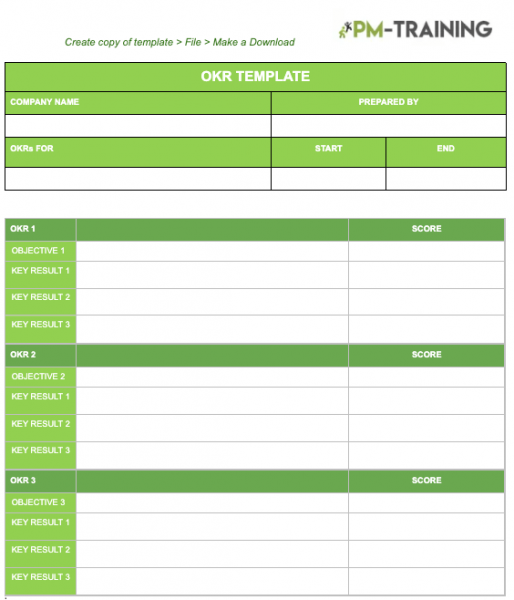
OKR Planning Template Word
OKR Planning Template Excel
OKR Planning Template PowerPoint
Online Tools for OKR Planning
Asana
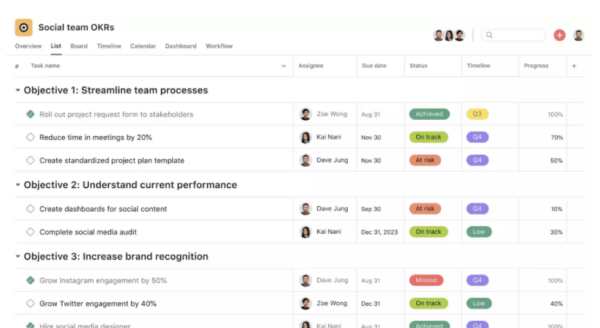
The Asana OKR management app helps you achieve goals by using its planning features. It helps understand the relationship between daily operations and top goals.
ClickUp
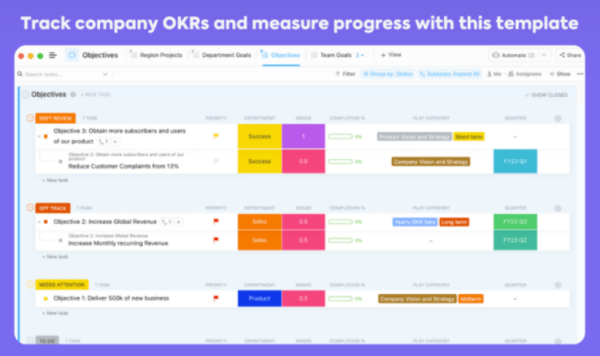
ClickUp is an OKR and productivity tool for teams in small and large companies. From managing remote teams to advanced performance management, it’s the right software for performance management. ClickUp helps align business operations with objectives.
Trello
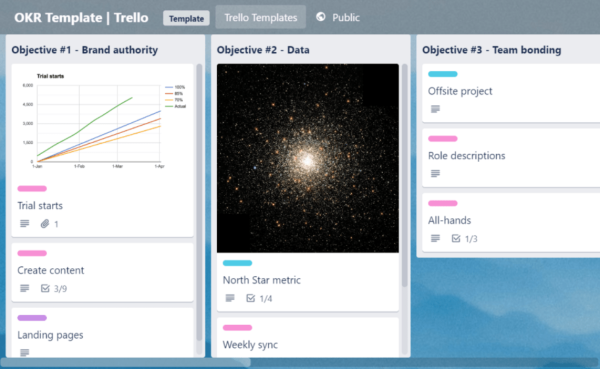
The Trello goal-setting OKR system is a great tool to increase the productivity of your team. There’s a lot that can be dug into but the Trello OKR Planning basics are enough to keep you moving forward to achieve your project goals.
Miro
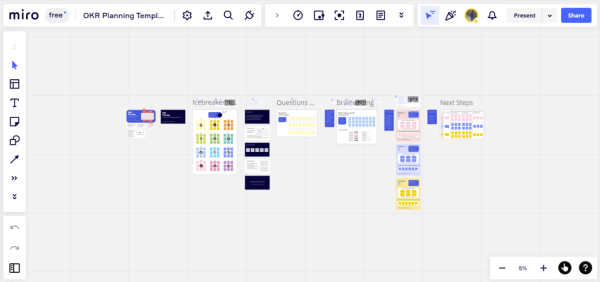
Use the Miro OKR Planning template to organize the process from end to end, allowing you to define your company and team OKRs. Take the knowledge of your audience into consideration when you plan an OKR session.
Wrike
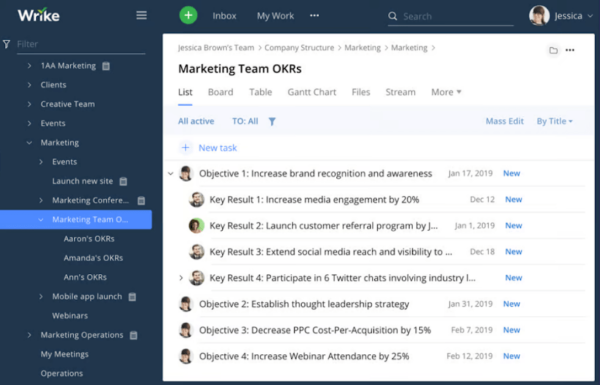
Wrike gives the project manager and the project team the ability to see goals that match the vision of the company. The Wrike OKR Template helps teams with goals that align with and help build ambitious and overarching objectives.
How to create an effective and strategic OKR
Set specific, measurable, achievable, relevant, and time-bound objectives, that is to say SMART goals
Make sure your objectives are aligned with your company’s strategy.
Choose a few key results that you will use to measure progress towards your objectives.
Set a timeframe for your OKR.
Assign responsibility for each key result.
Review and adjust your OKR periodically.
Mistakes to avoid when writing an OKR
There are a few common mistakes that people make when creating OKRs. Here are a few of them:
One common mistake is setting goals that are too small or too easily achievable. This can lead to a feeling of dissatisfaction among employees when they reach the goal, as it was not truly challenging.
Another common mistake is setting goals that are too large or unrealistic. This can lead to frustration and a sense of failure, as the goal feels unattainable.
Not involving all members of the team in the goal-setting process.
Not having a timeframe for each objective.
Not revisiting and adjusting objectives as needed.
Useful online tools when creating OKR
If you are thinking of adopting OKR management software for your organization, here’s a list of the most popular platforms you can find online:
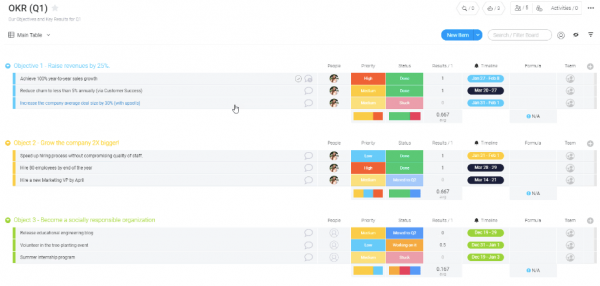

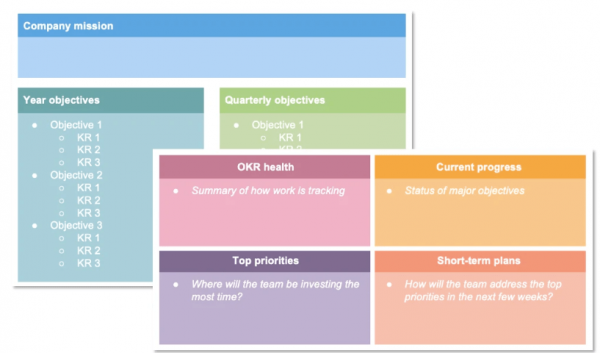
What makes a good OKR
First and foremost, your OKR should be SMART: Specific, Measurable, Achievable, Relevant, and Time-bound. This will help to ensure that your goal is clear and attainable.
Next, you should involve your team in the creation of the OKR. This will help to ensure that everyone is on the same page and buy-in to the goal.
Finally, you should review and adjust your OKR regularly. This will help to ensure that your goal remains relevant and achievable as circumstances change.
As a general guideline, attempt to create two to three Key Results for the Objective. Make sure your OKRs include a link to them in your project plan. (that’s a handy shortcut)
FAQs
What is an OKR?
OKR stands for Objectives and Key Results. This is a system for setting goals and progress within your organization.
What makes a good OKR?
Clear, succinct, and easily readable OKRs are perfect. The Key Results should demonstrate the data you are collecting without more explanation.
What are the benefits of using OKR?
Some of the most notable benefits include increased clarity of purpose, improved alignment and focus, and greater accountability for your team.
Why does OKR fail sometimes?
Most attempts to adopt OKRs fail in organizations because when there are serious issues with decision-making or they are not set correctly. Sometimes their expectations can be too high or too many which may lead them to frustration.
Are OKRs considered to be Agile?
OKRs assist Agile teams in tracking progress and making required modifications along the route, as well as refining the focus and team efforts toward a specific goal.

